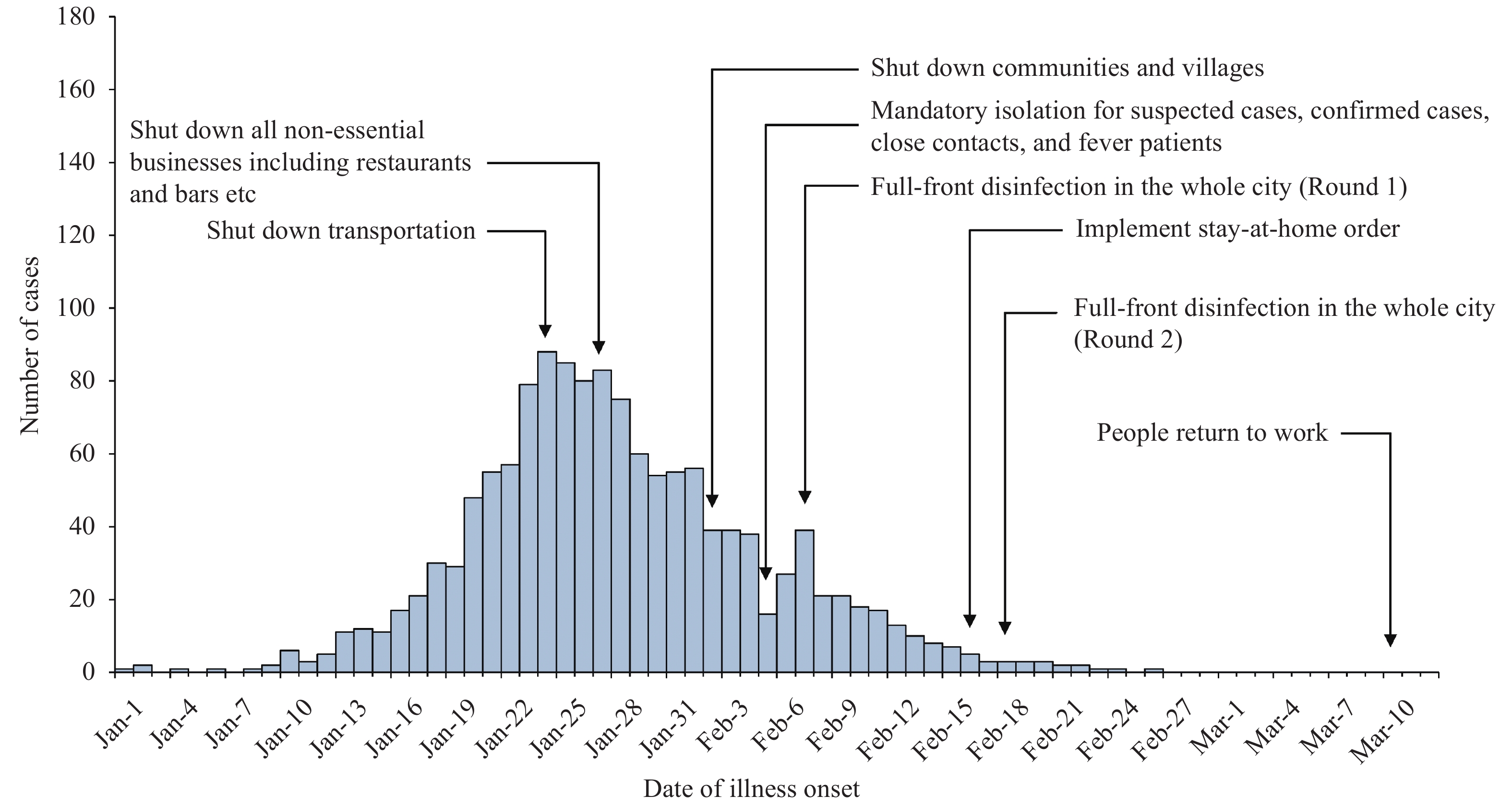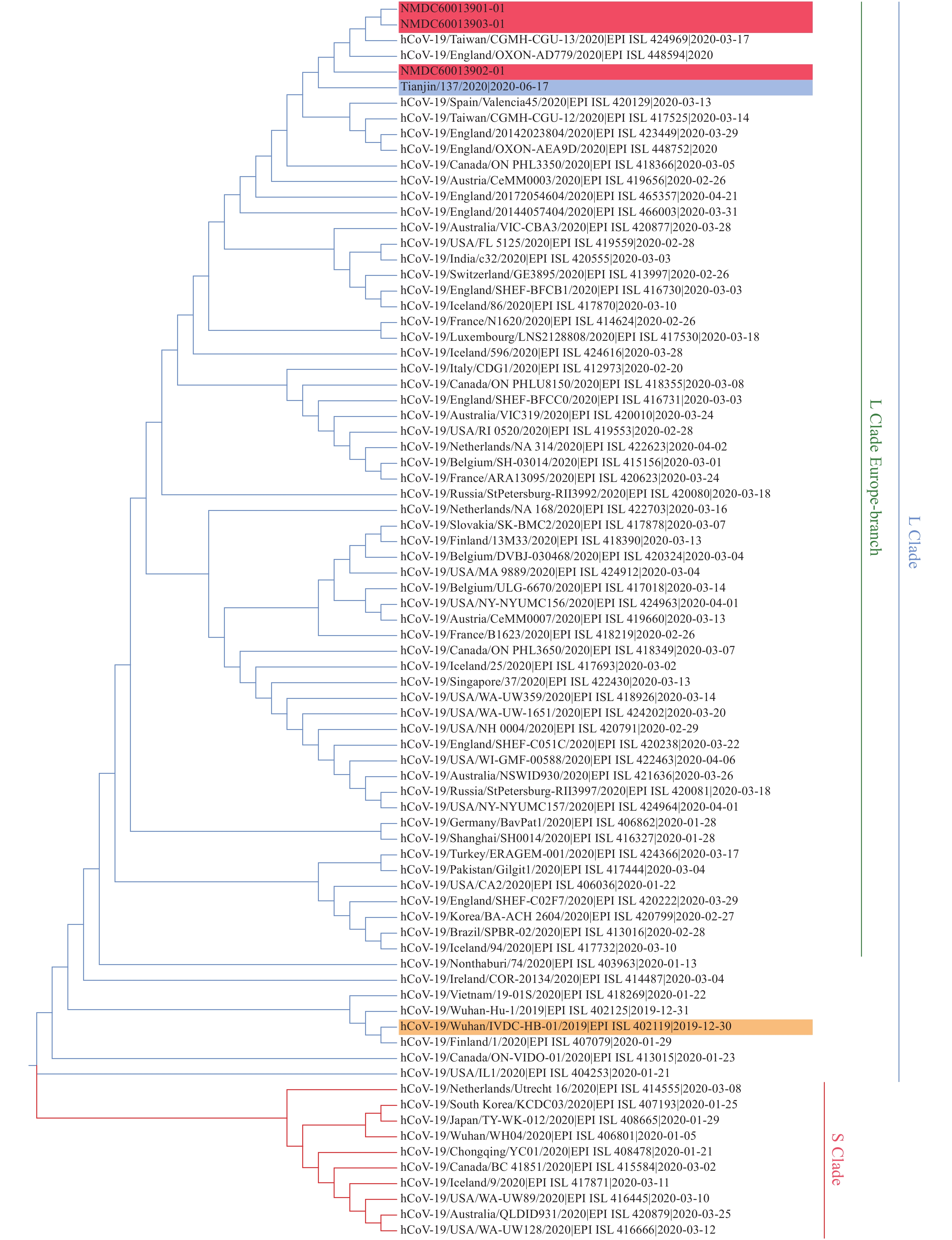2020 Vol. 2, No. 27
The key epidemiological parameters including serial interval, basic reproductive number (R0), and effective reproductive number (Rt) are crucial for coronavirus disease 2019 (COVID-19) control and prevention. Previous studies provided different estimations but were often flawed by some limitations such as insufficient sample size and selection bias.
In this study, a total of 116 infector-infectee pairs meeting strict inclusion criteria were selected for analysis. The mean serial interval of COVID-19 was 5.81 days (standard deviation: 3.24). The estimated mean with 95% confidence interval of R0 was 3.39 (3.07–3.75) and 2.98 (2.62–3.38) using exponential growth (EG) and maximum likelihood (ML) methods, respectively. The Rt in the early phase of the epidemic was above 1 with the peak of 4.43 occurring on January 8, and then showing subsequent declines and approaching 1 on January 24.
This study supports previous findings that COVID-19 has high transmissibility and that implementing comprehensive measures is effective in controlling the COVID-19 outbreak.
What is already known about this topic?
Elderly persons are vulnerable to infectious diseases, and nutritional status and health conditions were important to evaluate for disease prevention and ability to recover for the elderly during the coronavirus disease 2019 (COVID-19) pandemic.
What is added by this report?
In our study, a rapid assessment questionnaire was used to investigate the change of household life and dietary intake of the elderly (aged 60 years or more) during community closure. Food consumption frequency of aquatic food products, soybeans, and fresh fruits declined dramatically with reductions of 70.9%, 70.9%, and 53.0%, respectively, and 49.6% of the elderly lived with chronic non-communicable diseases but had little knowledge of nutrition and health.
What are the implications for public health practice?
Community closure measures in Wuhan City have played a key role in cutting off the transmission route of COVID-19 and protecting vulnerable groups. As a high-risk population, the elderly should be advised to maintain and strengthen a balanced diet with proper nutrition through increasing intake of aquatic food products, soybeans, fruits, and vegetables, reducing total caloric intake, and decreasing oil and salt consumption. These measures will be significant for the elderly to reduce the risk of chronic disease complications and COVID-19 infection and to decrease the chance of critical illness.
What is already known on this topic?
Following 110 days of no new confirmed cases of COVID-19 in Tianjin Municipality, a case was confirmed on June 17, 2020. A total of 136 local cases had been reported previously.
What is added by this report?
The 137th case was found in a dishwasher working in the western dining room of a hotel in Tianjin. Epidemiological investigations and laboratory research indicated that this case was likely transmitted from an asymptomatic individual that had recently visited several public places in Beijing Municipality and was working as a chef in the same workplace as the patient. Sequencing and analysis found that the COVID-19 virus genome found in the 137th case was 100% identical to sequences from the recent outbreak in Beijing’s Xinfadi Agricultural Product Wholesale Market.
What are the implications for public health practice?
A combination of meticulous epidemiological investigation and detailed laboratory research can promptly identify the source of COVID-19.



 Subscribe for E-mail Alerts
Subscribe for E-mail Alerts CCDC Weekly RSS Feed
CCDC Weekly RSS Feed



